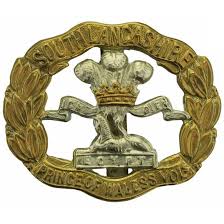Personal Details
Born: 15 March 1898 in Whitchurch, Shropshire and baptised on 17 April 1898 in the Church of the Saviour, Whitchurch.
Family: He was one of eight surviving children born to William Thompson Corn, a railway brakesman and his wife Ann, nee Rigby. He married Matilda Davies in 1922 in Nantwich, Cheshire. The couple had two children, Charles and Elizabeth.
Residence: At the time of his baptism in 1898 he was living with his parents and siblings at 10 Talbot Street, Whitchurch. By 1901 the family had moved to 36 Benyon Street, Shrewsbury, Shropshire. In 1911 they were still in Shrewsbury, but now at 5 Beaumont Terrace, John Street. On his demobilisation in 1919 an address of 10 Station View, Nantwich, Cheshire was given for him. By 1939 he was living with his wife and children at 14 Highland Road, Royal Leamington Spa, Warwickshire. At the time of his death in 1967 his home was 61 Church Street, Coventry, Warwickshire.
Employment: In 1919 his occupation was given as a grocer. In 1939 he was an Insurance agent.
Died: 7 February 1967 in Coventry, Warwickshire, aged 68.
Military Details
Regiment: South Lancashire Regiment (previously King`s Shropshire Light Infantry)
Rank: Sergeant
Service Number: 242778 (previously 5503 and 2286)
Date of Enlistment: 28 September 1914
Date of Discharge: 23 April 1919
Reason for Discharge: Demobilisation
Albert was awarded the Campaign Medals (British war medal and Victory medal)

The British War Medal (also known as 'Squeak') was a silver or bronze medal awarded to officers and men of the British and Imperial Forces who either entered a theatre of war or entered service overseas between 5th August 1914 and 11th November 1918 inclusive. This was later extended to services in Russia, Siberia and some other areas in 1919 and 1920. Approximately 6.5 million British War Medals were issued. Approximately 6.4 million of these were the silver versions of this medal. Around 110,000 of a bronze version were issued mainly to Chinese, Maltese and Indian Labour Corps. The front (obv or obverse) of the medal depicts the head of George V. The recipient's service number, rank, name and unit was impressed on the rim.
The Allied Victory Medal (also known as 'Wilfred') was issued by each of the allies. It was decided that each of the allies should each issue their own bronze victory medal with a similar design, similar equivalent wording and identical ribbon. The British medal was designed by W. McMillan. The front depicts a winged classical figure representing victory. Approximately 5.7 million victory medals were issued. Interestingly, eligibility for this medal was more restrictive and not everyone who received the British War Medal ('Squeak') also received the Victory Medal ('Wilfred'). However, in general, all recipients of 'Wilfred' also received 'Squeak' and all recipients of The 1914 Star or The 1914/1915 Star (also known as 'Pip') also received both 'Squeak' and 'Wilfred'. The recipient's service number, rank, name and unit was impressed on the rim.

